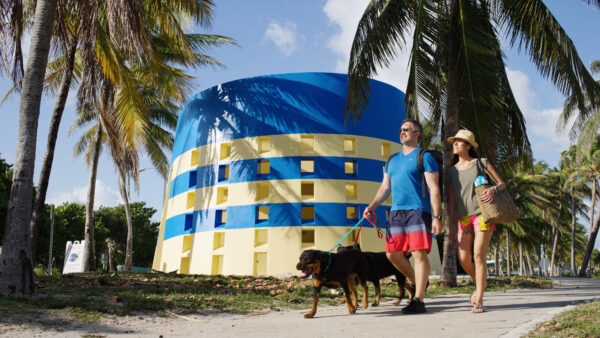Planning a holiday or a work trip? Travel should be exciting, not stressful. Here's a travel checklist for your cochlear implant to help you feel more prepared for your next trip.
What to know before you go
- Note important phone numbers, email addresses and website information of your hearing health professional and doctor in case you have any issues while traveling.
- Visit the Cochlear™ Clinic Finder to locate the closest clinic for where you’re staying.
- Change your microphone covers if needed to avoid any disruption to your sound quality. These should be changed every three months, or sooner if they become dirty.
- If you’re flying, check online to see if your flights offer in-seat electrical charging outlets.
- Charge any spare rechargeable batteries so they’re ready to go.
What to pack in your carry-on
- Pack extra batteries and/or battery chargers, cables and spare sound processors if you have them. Lithium-ion batteries are not allowed in checked-in luggage, so keep them in your carry-on.
- Depending on where you’re traveling to and for how long, consider bringing a spare battery charger, microphone protectors, your drying equipment and a power adaptor appropriate for your destination.
- Never put your spare sound processor into checked baggage as this could expose it to damaging x-rays. Checked baggage is screened with a higher-level x-ray compared to carry-on luggage.
Security screening at airports and train stations
- While not required, you may want to inform security personnel that you have hearing loss and have an implanted medical device for hearing. You can also show your Patient Information Card.
- Your Cochlear™ Nucleus® Nexa™ Sound Processor can safely go through metal detectors and full body scanners, so you don’t need to remove it beforehand. Your device may make buzzing sounds as you pass through. Remove your sound processor if this bothers you.
- If security personnel ask you to remove your sound processor, switch it off and store it inside your carry-on luggage before putting it through the x-ray. Don’t put it directly on the conveyor belt as the static electricity could affect your device.
- If the alarm sounds when you walk through the metal detector or full body scanner, you may go through additional screening, including a pat-down or inspection of your device. Don’t worry if security uses a handheld wand to screen you. The wand won’t damage your cochlear implant, but it will beep when it passes over your sound processor.
Using in-flight entertainment
- Before you fly, ask your airline about their in-flight entertainment system. You may need to purchase an adaptor if they use a two or three-prong socket.
- One way to access the entertainment system is to use a Cochlear Wireless Mini Microphone 2+. Plug the supplied cable into the plane’s audio out-socket. If you need a two-prong adapter, you can usually purchase this at the airport.
Another option is to download your favorite streaming entertainment (such as movies, audiobooks, podcasts or TV shows) to directly stream from your compatible1 phone or device to your sound processor.
At your destination
- If you’re staying in a hotel, let the check-in staff know you have hearing loss so they can wake you in the event of an emergency.
- If you lose or damage your sound processor, contact the local clinic.
Your Nucleus Nexa System comes with a distinct advantage: Your unique hearing information is securely stored in the implant, so it’s always with you. If for any reason you need a new Nucleus Nexa Sound Processor, it’s as quick and easy as putting it on your head—there’s no need to program your sound processor.
For travel kits to hold all of your accessories, visit the online Cochlear Store.
- For complete smartphone compatibility information, please visit www.cochlear.com/compatibility

